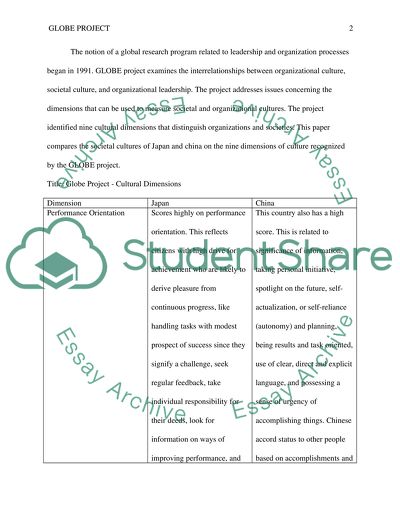GLOBE project Research Paper Example | Topics and Well Written Essays - 1500 words. Retrieved from https://studentshare.org/human-resources/1489672-globe-project
GLOBE Project Research Paper Example | Topics and Well Written Essays - 1500 Words. https://studentshare.org/human-resources/1489672-globe-project.


